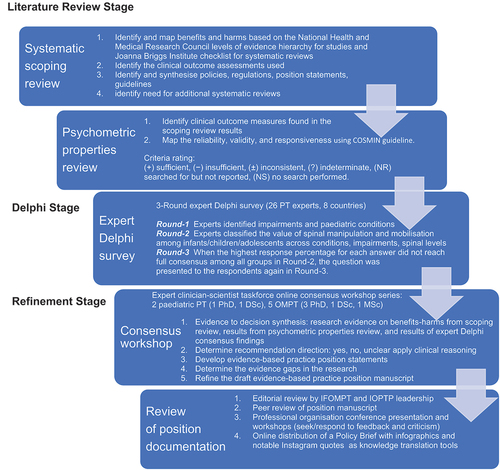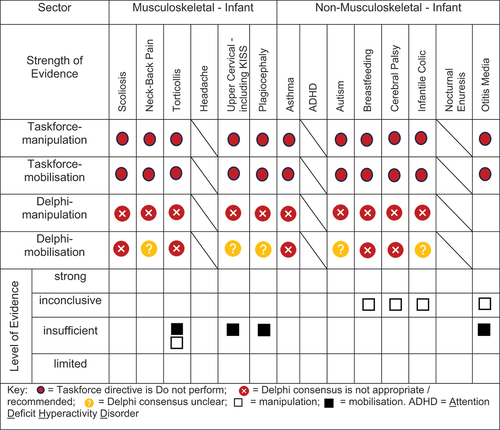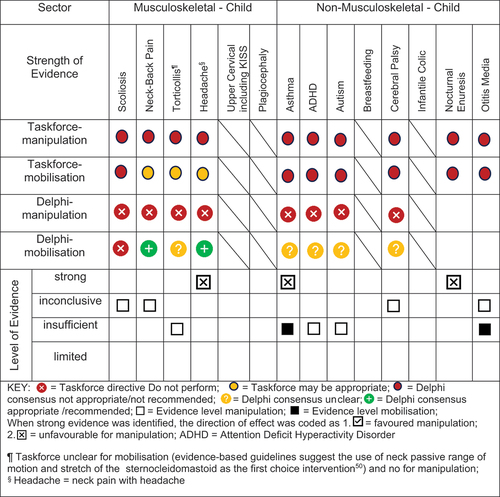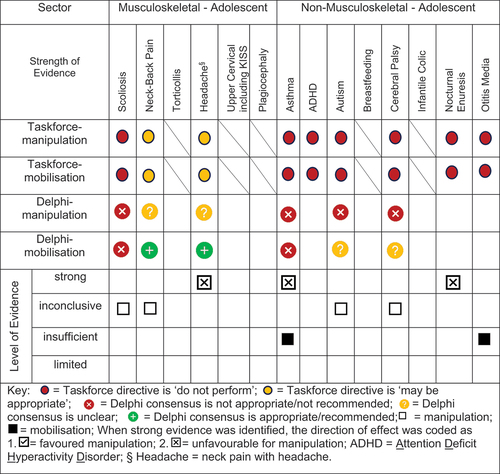Figures & data
Box 1. Criteria for evidence to decision framework adapted from Table 1 in Alonso-Coello and colleagues [Citation16].
Table 1. Decision rules for final recommendations and directives are listed. They were based on summative analysis of one scoping review, two reviews of psychometric properties, and one 3-round expert Delphi panel survey.
Table 2. Summary of findings by musculoskeletal condition represent our recommendations and research direction across the 1) level of evidence from a scoping review, 2) psychometric properties from two psychometric property reviews, 3) expert Delphi survey data, 4) taskforce recommendation as appropriate for clinical use, and 5) future research priority. The Delphi table includes only the relevant ages .
Table 3. Summary of findings by non-musculoskeletal condition represent our recommendations and research direction across 1) level of evidence from a scoping review, 2) psychometric properties from two reviews, 3) expert Delphi survey data, 4) taskforce recommendation as appropriate for clinical use, and 5) future research priority.
Table 4. Evidence-based practice position statement on spinal manipulation and mobilisations for paediatric populations predicated on clinicians using biopsychosocial clinical reasoning to determine when the intervention is appropriate.




